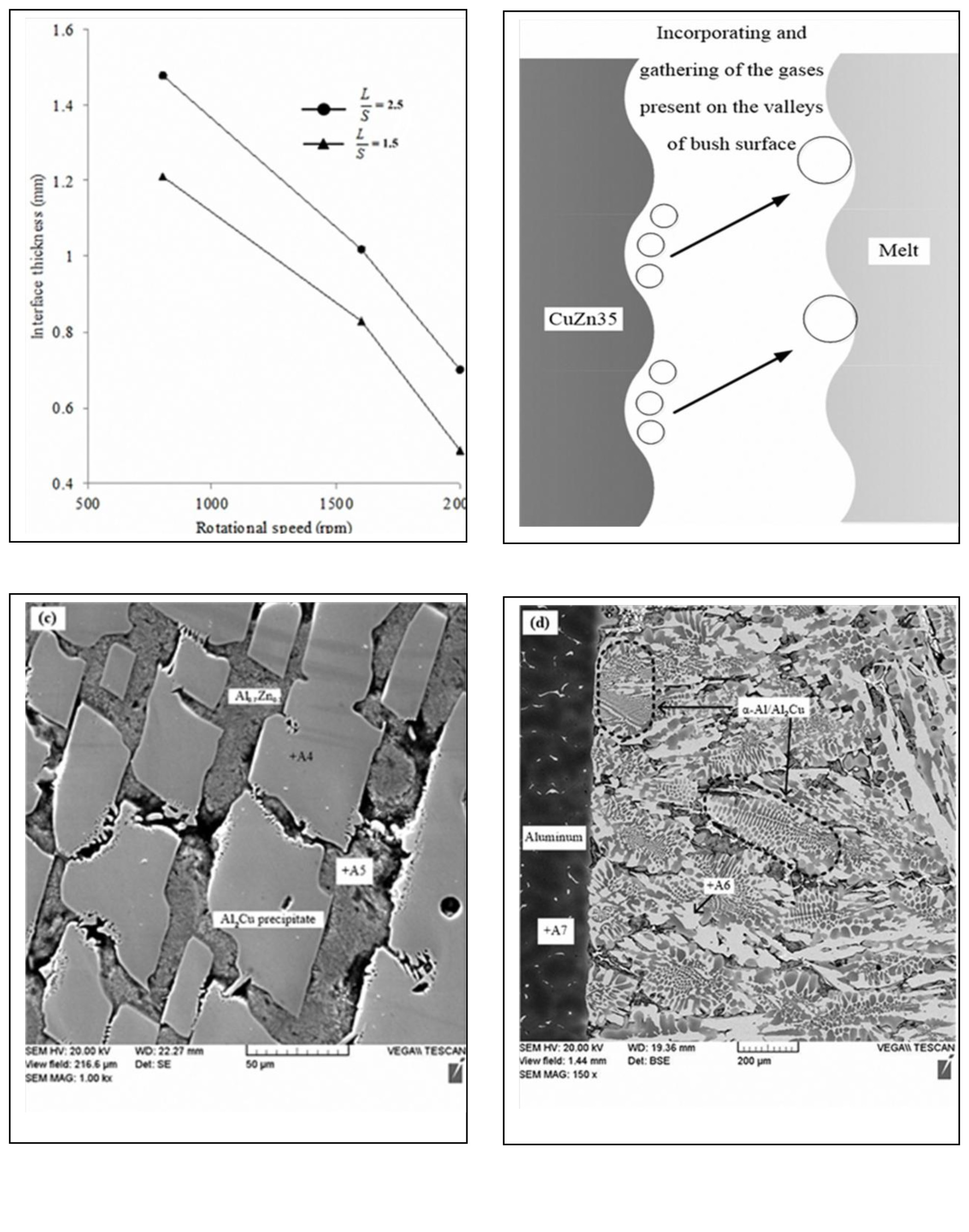Fri, Jul 18, 2025
[Archive]
Volume 15, Issue 4 (December 2018)
IJMSE 2018, 15(4): 52-61 |
Back to browse issues page
Download citation:
BibTeX | RIS | EndNote | Medlars | ProCite | Reference Manager | RefWorks
Send citation to:



BibTeX | RIS | EndNote | Medlars | ProCite | Reference Manager | RefWorks
Send citation to:
Gholami M, Divandari M. Interfacial Phases and Defects Characteristics of Al/Cu-Zn Bimetal Produced via Centrifugal Casting Process. IJMSE 2018; 15 (4) :52-61
URL: http://ijmse.iust.ac.ir/article-1-1084-en.html
URL: http://ijmse.iust.ac.ir/article-1-1084-en.html
Abstract: (22643 Views)
Centrifugal casting process, in both horizontal and vertical mode, is considered as an efficient method to produce bimetallic components. Al/Cu65Zn35 couples were prepared by the vertical centrifugal casting process. In this study, different volume of molten aluminum having melt-to-solid (m/s) volume ratios (VR) of 1.5 and 2.5, were cast into preheated brass bush rotating at 800, 1600, and 2000 (rpm), respectively. The thickness of the interface, which is composed of three different zones, is depended on the rotational speed and the (VR) and was at least 490µm (at VR=1.5 and 2000 rpm) and at most 1480 µm (at VR=2.5 and 800 rpm). The results of optical microscopy, energy dispersive X-ray spectroscopy (EDS), and X-ray diffraction analysis showed that the interface layers are composed of Al2Cu5Zn4, Al3Cu3Zn, Al2Cu precipitates dispersed in the matrix and finally α-Al/Al2Cu anomalous eutectic structure near the aluminum side. Gas pore entrapment and oxide film entrainment defect was detected within the interface next to the aluminum base metal.
Type of Study: Research Paper |
Subject:
Casting Processes and Solidification Phenomena
Send email to the article author
| Rights and permissions | |
 |
This work is licensed under a Creative Commons Attribution-NonCommercial 4.0 International License. |








